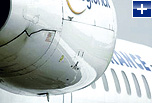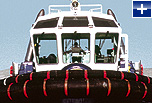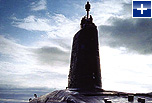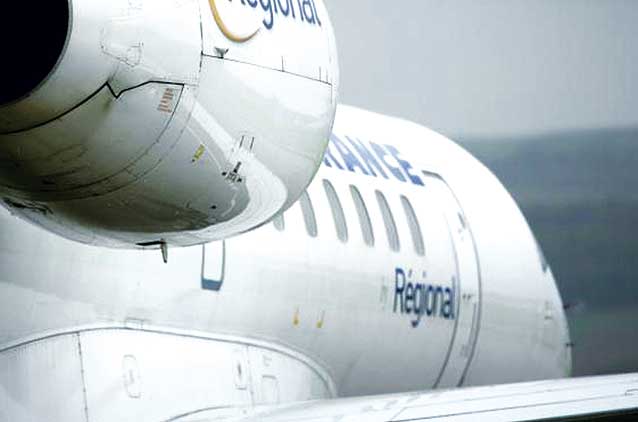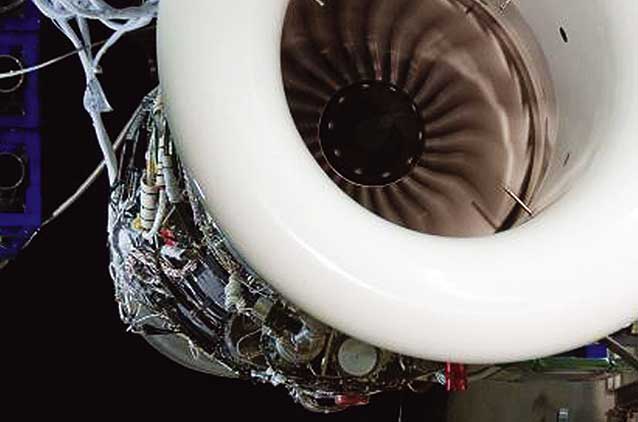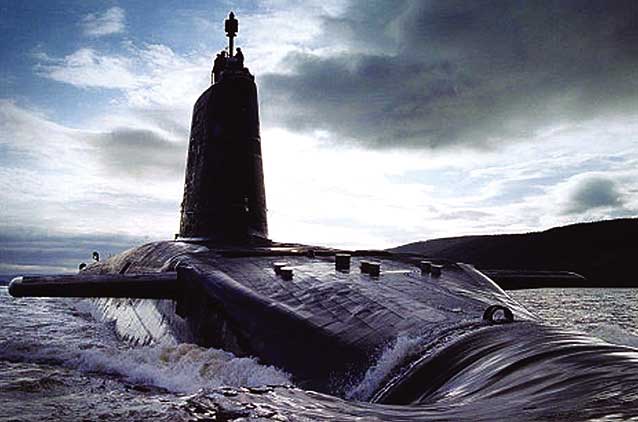Chief Executive’s review Sir John Rose

Developing the business
It is clearly impossible to provide a forecast of the precise impact that the global crisis will have on Rolls-Royce. However, it is clear that the Group’s power systems portfolio – whether for use on land, at sea or in the air – provides products and services for which there will be a strong, global demand for the foreseeable future. Importantly, the sectors in which the Group operates are characterised by high barriers to entry because of the advanced technologies required and routes to market which have to be established and maintained. Rolls-Royce will be able to exploit these advantages over many years as the global economy recovers and resumes growth.
A long-term business
The longevity of our programmes, the scale of our order book and the increasing importance of our services activity suggest that over the next ten years the Group can double in size through organic growth alone. In civil aerospace, for example, based on our understanding of the order book and the long-term programmes in which we are involved, we see a market potential for around 8,000 wide-bodied aircraft over the next 20 years, a very significant opportunity for our Trent engine family.
Investing for growth
Rolls-Royce has a strong track record of developing businesses by investing in organic growth, partnerships and acquisitions. Our civil aerospace business is a case in point. Our acquisition of the Allison Engine Company in 1995 helped Rolls-Royce build up a strong position in the corporate and regional jet market through the highly successful AE 3007 programme. Our joint venture with BMW in 1990 enabled us to establish a new centre of excellence in Germany for two shaft engines, an important strategic development which culminated in the Group buying out BMW’s share of the joint venture in 1999. Collaboration also played a key role in the development of the Trent programme, with Rolls-Royce agreeing an important series of risk and revenue sharing partnerships with a wide range of global companies.
A consistent approach
We are taking the same approach to develop our marine business which was transformed by the acquisition of Vickers in 1999. We gained access to new capabilities including design and integration systems, propulsion and control equipment, a global sales and services network and routes to market for the offshore and merchant sectors. This combination of a strong ship design capability and the provision of high technology equipment and systems has enabled marine to improve its market access and broaden its product offering.
Defence aerospace has similarly been transformed from a narrowly focused business which was overly dependent on the UK to one which provides engines and service support on a global basis and across a wide range of sectors including fast jets, transport aircraft, unmanned vehicles, trainers and helicopters. We have more than 160 customers in 103 countries, with the USA now accounting for around 45 per cent of defence aerospace revenues.
Exploring new opportunities as a power systems company
Looking ahead, the Group can take full advantage of its strong systems integration capability based on its knowledge of technology, its close understanding of customers’ needs and its ability as a power systems company to apply these integration skills in support of the customer. This will enable the Group to exploit its technological strengths in adjacent markets and to develop its existing businesses through partnerships and acquisitions.
A good example of this is civil nuclear. In 2008, we established a new business unit to address the rapidly expanding global market for nuclear power generation which we estimate could be worth around £50 billion per year within 15 years. The civil nuclear opportunity plays to our strengths.
It requires technological expertise, systems integration capabilities and a global supply chain, all of which we have developed during the 50 years we have designed, manufactured and supported nuclear reactors for the Royal Navy’s submarine fleet.
We will also use this approach to take advantage of other opportunities to address distributed power and alternative energy.




